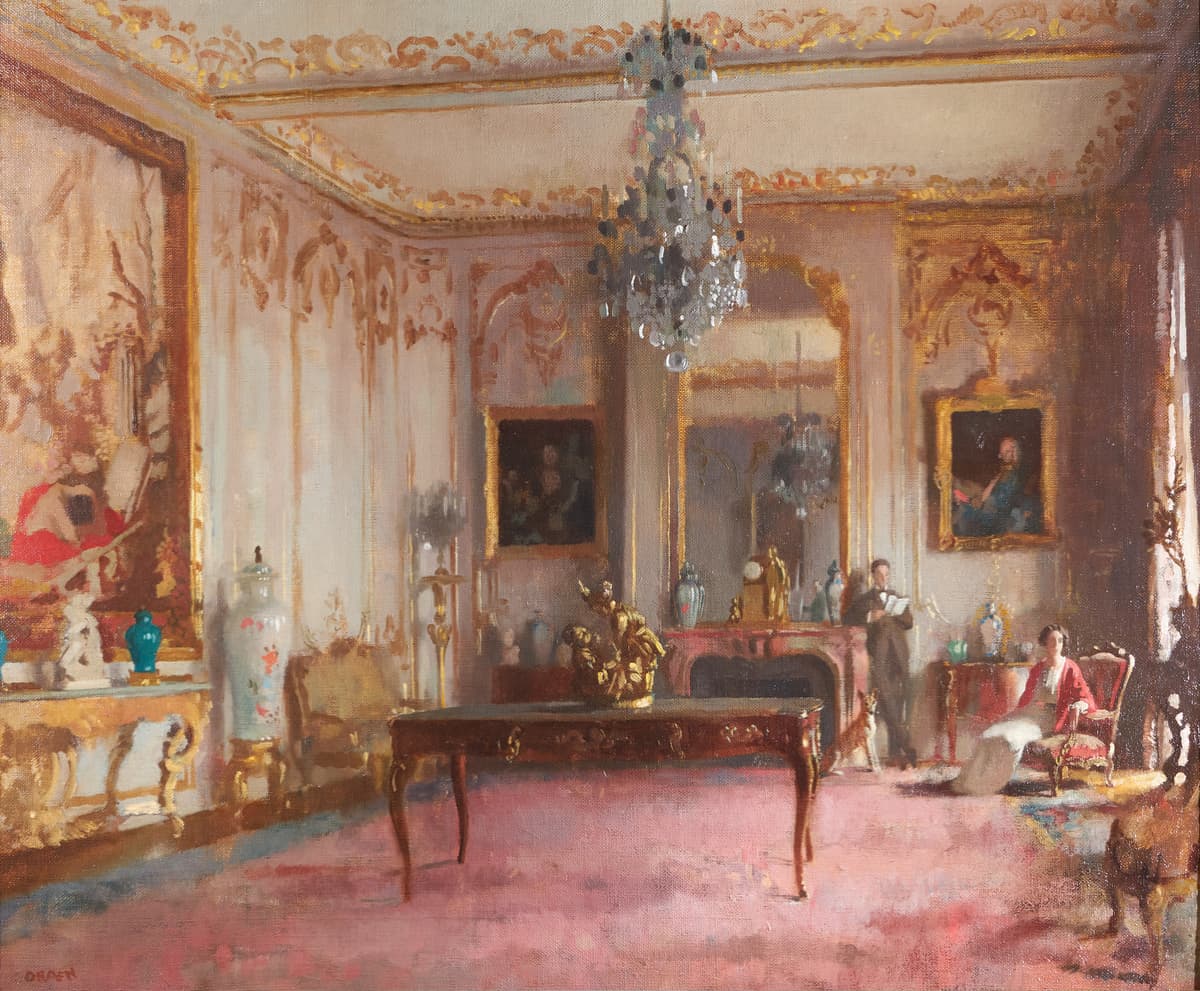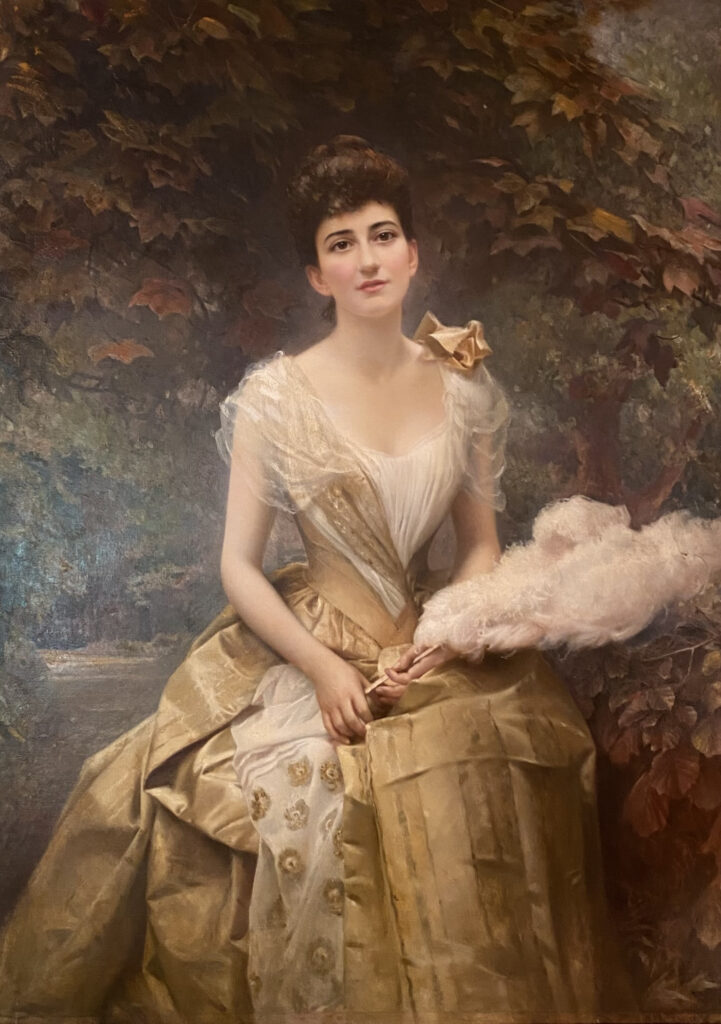‘The Sassoons’ Summons a Golden Age
The show, at The Jewish Museum, ranges from scrolls to Sargent.

To walk into “The Sassoons” at the Jewish Museum is to time travel to an age when Jews from Baghdad traded opium at Beijing and bolts of cotton from Mumbai. At its heart is a family that mixed religious awe and fabulous wealth, abundance alchemized into art. They journeyed from the Tigris to the Thames, and went from servants of pashas to intimates of kings. They married Rothschilds and wrote immortal verse before fading away. Here, they shine.
“The Sassoons,” which runs through the middle of next month, brings together more than 120 works of vertiginous diversity. Outside of the Sassoon vault you are unlikely to see paintings by John Singer Sargent and Winston Churchill cohabitate with Karaite prayer books and Samaritan calendars, which in turn share space with Yuan dynasty scrolls. This is eclecticism, and, it must be acknowledged, empire, at its most exquisite.
“The Sassoons,” curated by Claudia Nahson and Esther da Costa Meyer, is a book-length treatment of that same family, as well as one of another affluent clan, the Safras. A new tome by the English historian Sebastian Sebag Montefiore, aims to tell the history of the world through its dynasties. Another English historian, Niall Ferguson, tracked the rise of modern finance in his epic of the Rothschilds. Every remarkable family is remarkable in its own way.
The story of the Sassoons begins in earnest with David, who served as Baghdad’s treasurer before leading the family to India when the tolerance of the pashas for Jews wore thin. He is captured in a luminous portrait attributed to William Melville, who worked in the 1840’s. He wears a beige turban and robe, striped with reds and blues. This is an eminence, a 19th century Moses who has led his family to safe harbor at Mumbai, here a peek of azure background.

“Rachel Sassoon Beer,” from 1887 and by Henry Jones Thaddeus, does remarkable justice to the daughter of the first of David Sassoon’s sons to settle in England. Her pale skin and deep-black eyes are offset by the pink in her lips and cheeks. She is formal, but appears ready for fun. She wears a gold ribbon on her shoulder, but eschews jewelry. She also owned the Observer and the Sunday Times. She scored the scoop exculpating Alfred Dreyfus of treason.
Fast forward four decades and find Sargent’s “Sir Philip Sassoon,” who counted David Sassoon and James de Rothschild as great-grandfathers. His elegant bearing and steady gaze do homage to that lineage. He is young but not callow, already a member of Parliament and a social butterfly. An Eton and Oxford man, he served as private secretary to Field Marshal Sir Douglas Haig during World War I, serving as a kind of cultural attaché.

King Charles has lent to the exhibition a scent bottle made of jade, gold, pearls, diamonds, rubies, sapphires, and emeralds that Philip Sassoon lent to his great-grandmother, Queen Mary. His Majesty also sent over a lapis lazuli snuff box and a gold box from the House of Carl Fabergé. Churchill contributes a painting of the living room of Philip’s house at Port Lympne, as well as a bright rendering of its terrace. He, and seemingly everyone else, was a guest on its gounds.
The Sassoon collection included Thomas Gainsborough’s “The Artist With His Wife and Daughter,” a chiaroscuro gem — the only known where he paints his family —that is tinged with tragedy. The little girl at its center, Mary, would soon be dead. Gainsborogh was only 21 when he put brush to canvas. Jean-Baptiste-Camille Corot, a French master of landscape, is represented by “Souvenir of Roquemaure in the Gard,” an exhalation of green and blue.
Sargent, whose portraits structure the show like a spine, does painterly justice to Aline de Rothschild, Lady Sassoon, Philip’s mother. Swaddled in black fabric and adorned with a feathered headdress, one can imagine her adorning salons and ballrooms. Her fingers are remarkable, elongated and serpentine, an evolutionary adaptation to suit the galleries of gems with which she could have chosen to adorn them. Here, though, they are largely bare.
Sargent also painted Sybil Sassoon, the Countess of Rocksavage and Aline’s daughter. Charcoal sketches trace him finding his form before executing an oil portrait for her marriage. In it she wears a golden shawl that he gave her, thrown as to disclose the cure of her shoulder and the rise of her neck, which mirrors her family’s ascent.
The painting marks a contrast with, and a journey from, the ketubot—marriage contracts — and Torah scrolls from old Baghdad. Those are just one room, and a world, away.

